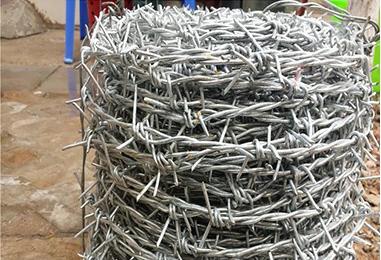 TEL:
+86-13102802206
TEL:
+86-13102802206
 Email:
fencenetting@china.com
Email:
fencenetting@china.com
 Language
Language
 TEL:
+86-13102802206
TEL:
+86-13102802206
 Email:
fencenetting@china.com
Email:
fencenetting@china.com
 Language
Language


Building a Barbed Wire Fence for Cattle
When it comes to cattle farming, one of the most essential structures to have in place is a sturdy and reliable fence. A barbed wire fence is a popular choice among cattle ranchers due to its effectiveness, durability, and cost-efficient nature. In this article, we will explore the process of building a barbed wire fence for cattle, highlighting the materials needed, the steps to follow, and some best practices to ensure your fence serves its purpose.
Materials Needed
Before beginning the construction of your barbed wire fence, it is crucial to gather the necessary materials. The primary components include
1. Barbed Wire Typically sold in rolls, you will need several rolls depending on the length of the fence. 2. Fence Posts Generally made of wood or metal, these posts provide the structural support for the fence. Wooden posts should be at least 6-8 feet long, while metal posts offer greater durability. 3. Post Caps These can be purchased separately to protect the tops of your wooden posts from moisture and pests. 4. Fencing Staples or Clips Used to attach the barbed wire to the posts. 5. Tension Wire This optional component helps maintain the tension of the barbed wire and adds stability to the fence. 6. Tools You will need essential tools such as a post hole digger, a hammer, a wire cutter, and a tensioning tool.
Steps to Build the Fence
1. Planning the Layout Before you start digging, plan your fence layout. Measure the area where you want the fence to be, taking into consideration the terrain, any existing structures, and the movement patterns of your cattle.
2. Setting the Fence Posts Begin by digging post holes at intervals of 8-12 feet. If you are using wooden posts, dig holes that are about 2-3 feet deep. Place the posts into the holes, ensuring they are vertical and aligned. Fill the holes with dirt or concrete to secure the posts firmly in place.

3. Attaching the Barbed Wire Once the posts are set, start attaching the barbed wire. It is advisable to run at least three to five strands of barbed wire for adequate strength and to discourage cattle from pushing against the fence. Start from one end of the fence, threading the wire through the plastic or metal clips and securing it tightly to the posts using fencing staples.
4. Tensioning the Wire To prevent sagging, it is crucial to tension the wire appropriately. Use a wire tensioning tool to pull the wire tight before securing it to the next post. This step is essential to maintain the integrity of the fence.
5. Finishing Touches After all the wire is attached and tensioned, inspect the entire fence for any sharp ends or loose wire that may pose a hazard to your cattle. Cut off any excess wire and place post caps on top of the wooden posts.
Best Practices
To ensure the longevity and effectiveness of your fence, consider the following best practices
- Regular Maintenance Inspect the fence regularly for signs of wear and tear, and promptly repair any damaged sections. - Avoiding Rust If you are using steel posts or wire, consider applying a protective coating to prevent rust. - Proper Spacing Adequate spacing between wires can help keep cattle contained without causing injury.
In conclusion, building a barbed wire fence for cattle is a straightforward project that can significantly improve the management of your livestock. By following the outlined steps and adhering to best practices, you can create a safe and effective enclosure that will protect your cattle for years to come.